Showing Spotlights 585 - 592 of 2879 in category All (newest first):
 Researchers have developed a method to produce a wood-derived, fully bio-based, and environmentally friendly flexible electronic circuit. They tailored the wood nanostructure to create a wood film with high transparency, flexibility, and strong mechanical properties. This material compares favorably with previously published two-dimensional cellulose-based materials developed for electronics or structural applications. This flexible circuit highlights the fact that wood can be used as a feedstock, with the potential to displace petroleum-based material for high-value products.
Researchers have developed a method to produce a wood-derived, fully bio-based, and environmentally friendly flexible electronic circuit. They tailored the wood nanostructure to create a wood film with high transparency, flexibility, and strong mechanical properties. This material compares favorably with previously published two-dimensional cellulose-based materials developed for electronics or structural applications. This flexible circuit highlights the fact that wood can be used as a feedstock, with the potential to displace petroleum-based material for high-value products.
Mar 12th, 2020
 Researchers report the direct writing of laser-induced graphene on a Kevlar textile. The transformation of Kevlar into graphene can be attributed to the photothermal effect induced by CO2 laser irradiation. Specifically, this resulted in high localized temperature, leading to the ablation and depolymerization of the Kevlar fiber. The remaining carbon atoms are recombined and 'recrystallized' into graphene. Based on this technique, it becomes feasible to prepare various types of flexible electronics on different commercial textiles such as silk and cotton. This will enable the efficient and customized preparation of multi-functional textile electronics.
Researchers report the direct writing of laser-induced graphene on a Kevlar textile. The transformation of Kevlar into graphene can be attributed to the photothermal effect induced by CO2 laser irradiation. Specifically, this resulted in high localized temperature, leading to the ablation and depolymerization of the Kevlar fiber. The remaining carbon atoms are recombined and 'recrystallized' into graphene. Based on this technique, it becomes feasible to prepare various types of flexible electronics on different commercial textiles such as silk and cotton. This will enable the efficient and customized preparation of multi-functional textile electronics.
Mar 11th, 2020
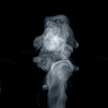 Around the world, research teams are addressing the rising global demand of water via the development of sustainable and straightforward technologies that make use of what nature has to offer. Researchers have now reported a hydrophilic and self-floating photothermal foam that shows high-rate evaporation without additional components, enabling an elegant and simple approach for water harvesting through solar evaporation. This photothermal foam enables an elegant and simple approach for water harvesting by utilizing energy from natural sunlight.
Around the world, research teams are addressing the rising global demand of water via the development of sustainable and straightforward technologies that make use of what nature has to offer. Researchers have now reported a hydrophilic and self-floating photothermal foam that shows high-rate evaporation without additional components, enabling an elegant and simple approach for water harvesting through solar evaporation. This photothermal foam enables an elegant and simple approach for water harvesting by utilizing energy from natural sunlight.
Mar 10th, 2020
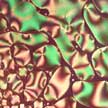 Both display and non-display applications of liquid crystals rely on advanced liquid crystal materials. Liquid crystal materials with new functionalities can be produced by dispersing nanomaterials in liquid crystals, resulting in a mixture of nano-dopants and liquid crystals. These novel, nanotechnology-based materials very often exhibit unusual properties. For that reason, nanomaterials in liquid crystals are a hot topic of contemporary liquid crystal research and many research teams around the world carry out basic research in this field.
Both display and non-display applications of liquid crystals rely on advanced liquid crystal materials. Liquid crystal materials with new functionalities can be produced by dispersing nanomaterials in liquid crystals, resulting in a mixture of nano-dopants and liquid crystals. These novel, nanotechnology-based materials very often exhibit unusual properties. For that reason, nanomaterials in liquid crystals are a hot topic of contemporary liquid crystal research and many research teams around the world carry out basic research in this field.
Mar 4th, 2020
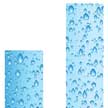 Nanofluidic membranes based on two-dimensional materials are promising materials for next-generation water desalination and purification. For instance, pristine and chemically modified graphene oxide membranes (GOMs) effectively block organic dyes and nanoparticles as small as 9 �. However, these nanomembranes fail to exclude smaller inorganic salt ions, which would be required to extract pure potable water from unconventional water sources such as, salt water, industrial waste water, and rain water. With a novel approach called planar heterogeneous interface desalination researchers can now achieve a high salt rejection rate close to 97%.
Nanofluidic membranes based on two-dimensional materials are promising materials for next-generation water desalination and purification. For instance, pristine and chemically modified graphene oxide membranes (GOMs) effectively block organic dyes and nanoparticles as small as 9 �. However, these nanomembranes fail to exclude smaller inorganic salt ions, which would be required to extract pure potable water from unconventional water sources such as, salt water, industrial waste water, and rain water. With a novel approach called planar heterogeneous interface desalination researchers can now achieve a high salt rejection rate close to 97%.
Mar 3rd, 2020
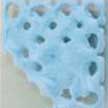 Metal-organic frameworks (MOFs) rank among the best materials for catalysis, gas storage and gas storage and processing. So far, more than 20 000 different MOFs have been fabricated and characterized. A crucial issue for designing MOF-based solids is about finding the best comprise between the material's porosity and its mechanical resistance in relation to a specific application. To do that, researchers have developed a modified 3D printer for the controlled deposition of inks, formulated from different MOF powders. This robocasting provides perfect control on the size and morphology of the final solid.
Metal-organic frameworks (MOFs) rank among the best materials for catalysis, gas storage and gas storage and processing. So far, more than 20 000 different MOFs have been fabricated and characterized. A crucial issue for designing MOF-based solids is about finding the best comprise between the material's porosity and its mechanical resistance in relation to a specific application. To do that, researchers have developed a modified 3D printer for the controlled deposition of inks, formulated from different MOF powders. This robocasting provides perfect control on the size and morphology of the final solid.
Feb 26th, 2020
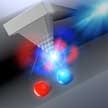 The foremost atom of the tip in a scanning probe microscope is critically important for precise imaging results. In atomic force microscopy, the front atom significantly affects atomic-scale contrast and atom manipulation. The chemical species is a dominant factor in determining the tip state, and in situ chemical identification of a tip apex remains a challenging task. Researchers found that Pauling's equation is applicable to the analysis of tip apex atoms. The team also demonstrated a way to determine electronegativity of surface atoms solely by experiments.
The foremost atom of the tip in a scanning probe microscope is critically important for precise imaging results. In atomic force microscopy, the front atom significantly affects atomic-scale contrast and atom manipulation. The chemical species is a dominant factor in determining the tip state, and in situ chemical identification of a tip apex remains a challenging task. Researchers found that Pauling's equation is applicable to the analysis of tip apex atoms. The team also demonstrated a way to determine electronegativity of surface atoms solely by experiments.
Feb 21st, 2020
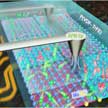 Two-dimensional (2D) materials could offer new building blocks for future technologies, but this requires approaches to control the carrier type in 2D semiconductors. A number of pioneering works have demonstrated different methods to program the carrier type in 2D materials, such as electrostatic doping, chemical doping, ion implantation, charge transfer, and annealing control. Recently, a team of researchers have developed a technique to dope 2D materials for redefinable nanoelectronics using nonvolatile ferroelectric domains.
Two-dimensional (2D) materials could offer new building blocks for future technologies, but this requires approaches to control the carrier type in 2D semiconductors. A number of pioneering works have demonstrated different methods to program the carrier type in 2D materials, such as electrostatic doping, chemical doping, ion implantation, charge transfer, and annealing control. Recently, a team of researchers have developed a technique to dope 2D materials for redefinable nanoelectronics using nonvolatile ferroelectric domains.
Feb 20th, 2020
 Researchers have developed a method to produce a wood-derived, fully bio-based, and environmentally friendly flexible electronic circuit. They tailored the wood nanostructure to create a wood film with high transparency, flexibility, and strong mechanical properties. This material compares favorably with previously published two-dimensional cellulose-based materials developed for electronics or structural applications. This flexible circuit highlights the fact that wood can be used as a feedstock, with the potential to displace petroleum-based material for high-value products.
Researchers have developed a method to produce a wood-derived, fully bio-based, and environmentally friendly flexible electronic circuit. They tailored the wood nanostructure to create a wood film with high transparency, flexibility, and strong mechanical properties. This material compares favorably with previously published two-dimensional cellulose-based materials developed for electronics or structural applications. This flexible circuit highlights the fact that wood can be used as a feedstock, with the potential to displace petroleum-based material for high-value products.
 Subscribe to our Nanotechnology Spotlight feed
Subscribe to our Nanotechnology Spotlight feed





